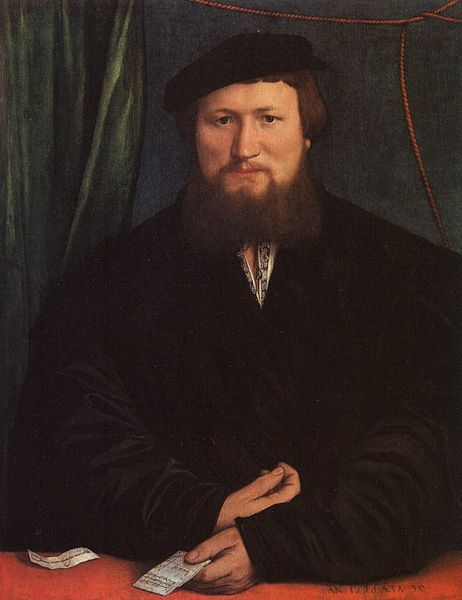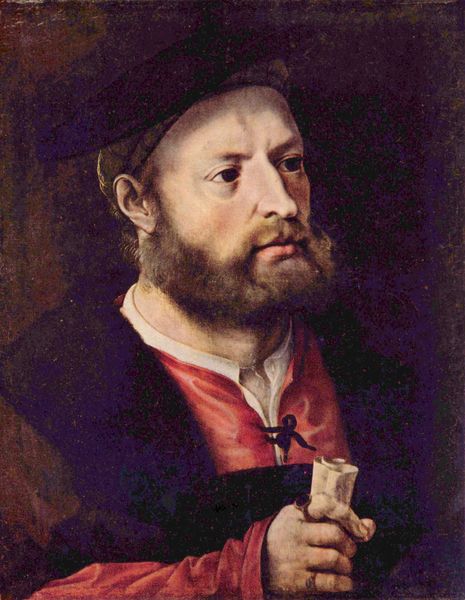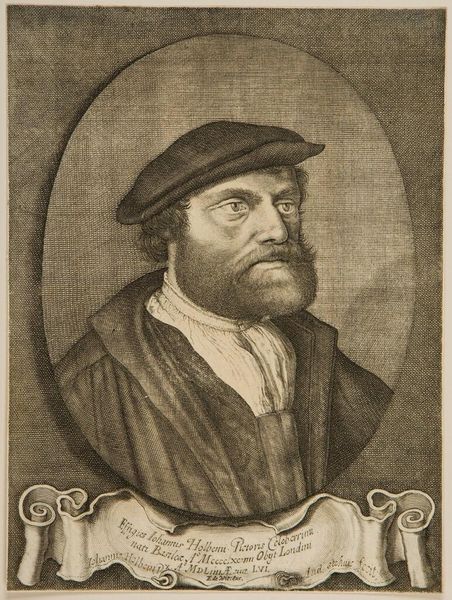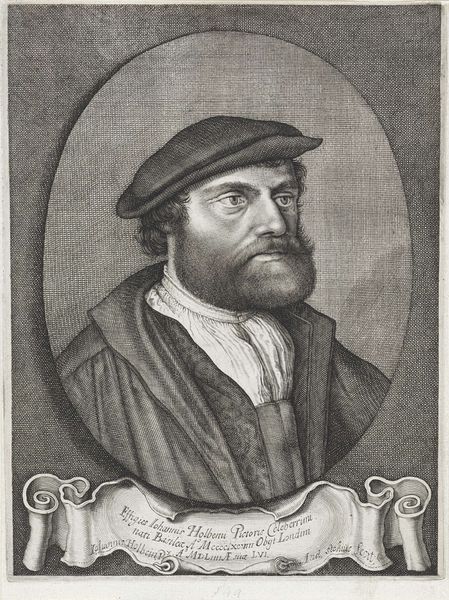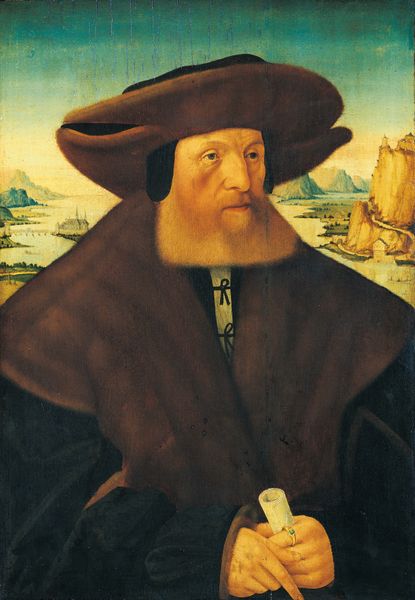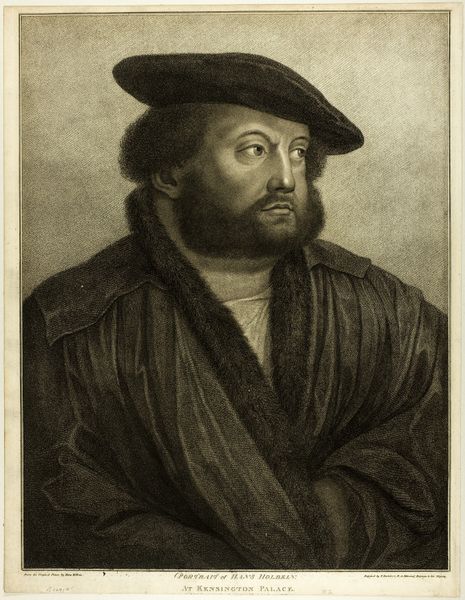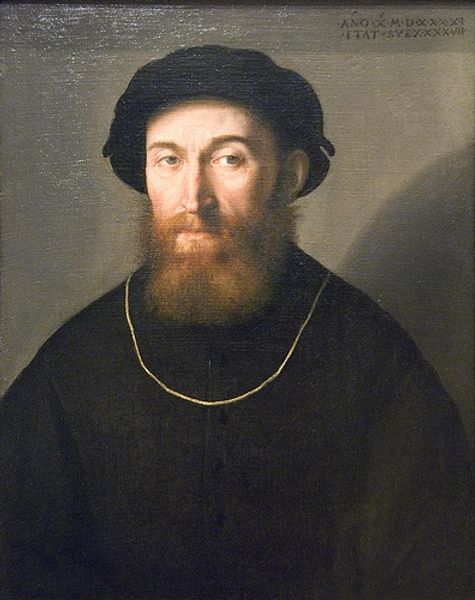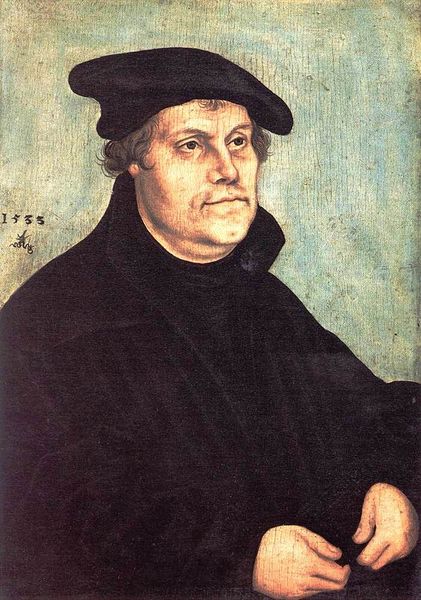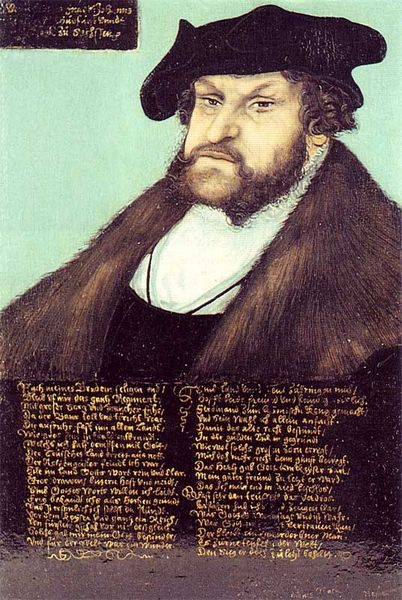
painting, oil-paint
#
portrait
#
painting
#
oil-paint
#
figuration
#
11_renaissance
#
history-painting
#
northern-renaissance
Dimensions: 39 x 30 cm
Copyright: Public domain
Curator: Looking at Hans Holbein the Younger’s "Portrait of a Member of the Wedigh Family," created in 1533 with oil paint, one immediately feels the somber mood emanating from the canvas. Editor: Absolutely. There’s a quiet intensity there, a contained power almost. It makes me consider the context of such formality. It suggests an assertion of class and standing during the Renaissance. How does the history of portraiture influence our reading of this individual’s presentation of self? Curator: That’s precisely where its value lies. This piece not only presents a man, but offers insights into the socio-political environment of its time. Notice his clothing—the dark colors speak to status, but also perhaps to religious conservatism. His ring, that tightly clutched scroll, they are laden with meaning regarding identity and social positioning. Editor: And it's essential to note Holbein's mastery, the painstaking rendering of texture and light. But even with all of that virtuosity, the painting feels restrained, almost withholding. Does the limited palette and controlled composition speak to specific gender expectations? Was the goal solely to document his existence or to actively craft a carefully curated image? Curator: The lack of extraneous detail allows the viewer to concentrate on the sitter himself, focusing intensely on his gaze. The gaze almost feels defiant given the societal constraints and potentially reflects the negotiation between personal expression and public image. And thinking about queer theory… I wonder, were we to consider subtexts beyond the sitter's heteronormative role? Editor: I agree about the directness of his stare; there’s an assertiveness but the somber tones convey, perhaps, the pressures and anxieties associated with his position within society. The politics of image-making always involved conveying appropriate messages for those in power. Considering today’s culture, are we still beholden to similar constructions? Curator: These artworks force us to constantly negotiate how historical representations impact current constructions of gender and power. What's projected is also informed by what's omitted or left unsaid. Editor: Ultimately, what’s fascinating is how an almost five-hundred-year-old painting still provides such an open dialogue about social identity, status, and self-presentation, isn’t it?
Comments
No comments
Be the first to comment and join the conversation on the ultimate creative platform.

